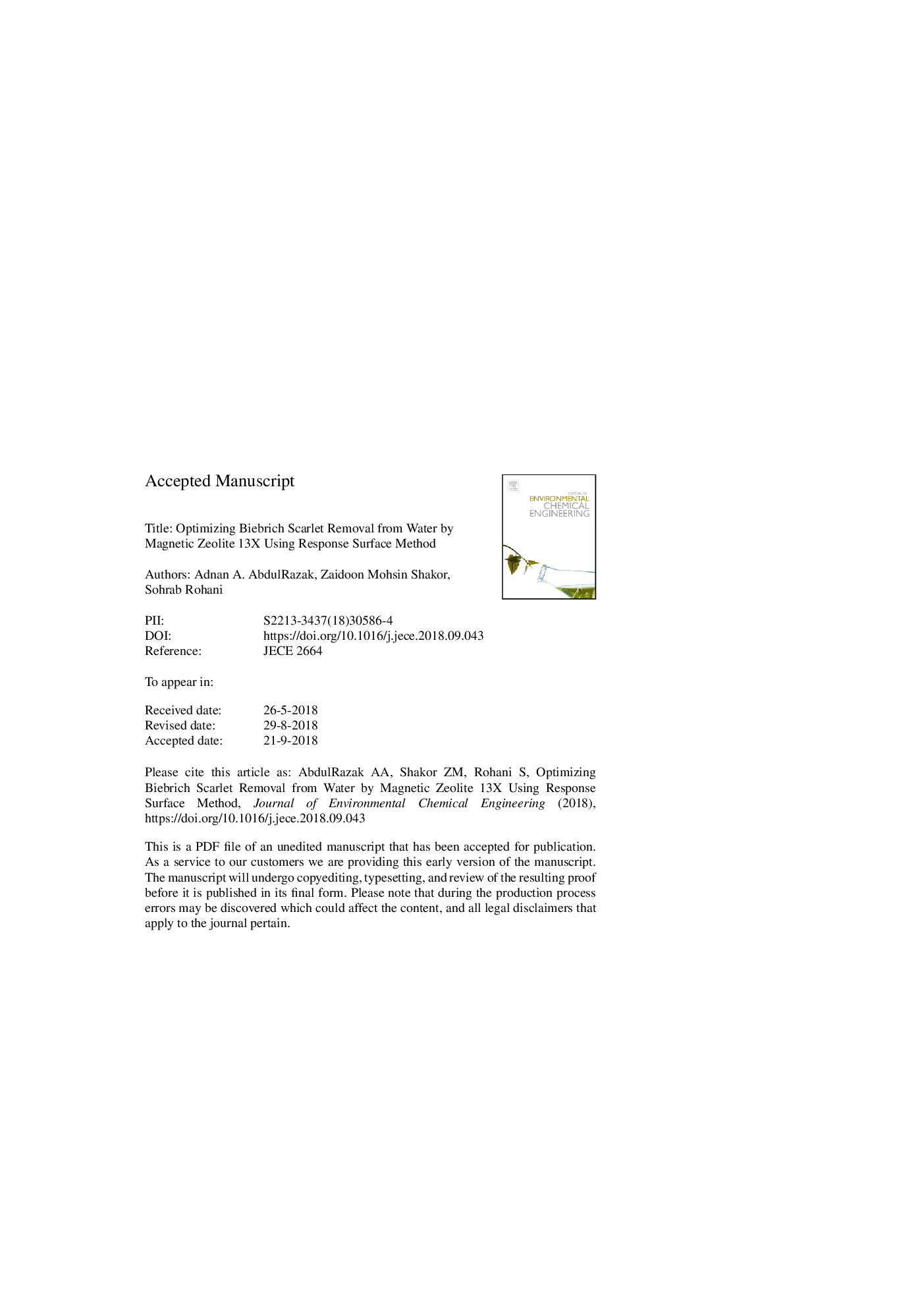| Article ID | Journal | Published Year | Pages | File Type |
|---|---|---|---|---|
| 11028976 | Journal of Environmental Chemical Engineering | 2018 | 18 Pages |
Abstract
The aim of this work was to study the removal of anionic Biebrich Scarlet (BS) dyes from aqueous solution by using magnetic Fe3O4 zeolite 13X (Fe3O4/13X). The composite adsorbent, synthesized by co-precipitation method, was characterized by X-ray Powder Diffraction (XRD), Transmission Electron Microscopy (TEM), Scanning Electron Microscopy (SEM), and Vibrating Sample Magnetometry (VSM), as well as Inductively Coupled Plasma (ICP) and Zeta Potential (ZP) measurements. The three-factor Central Composite Design (CCD) combined with Response Surface Modeling (RSM) was used for maximizing the BS dye removal from aqueous solution. The three independent variables, namely the solution pH (in the 3-9 range), initial dye concentration (30-100âmg/L) and adsorbent mass (90-350âmg/L) served as inputs to the quadratic model of adsorption capacity. The findings yielded by analysis of variance (ANOVA) confirmed the high significance of the regression model. The predicted values of the BS adsorption capacity were in good agreement with the corresponding experimental values. Optimized conditions for maximum BS dye removal by Fe3O4/13X were pH 3.10, 98.05âmg/L initial dye concentration, and 288.82âmg/L adsorbent mass. The validity of the quadratic model was examined by conducting experiments in which the optimum values of process variables were employed, and good agreement was found between the experimental and predicted values. The present study shows that magnetic zeolite can be used as an adsorbent for highly efficient BS dye removal.
Related Topics
Physical Sciences and Engineering
Chemical Engineering
Chemical Engineering (General)
Authors
Adnan A. AbdulRazak, Zaidoon Mohsin Shakor, Sohrab Rohani,
